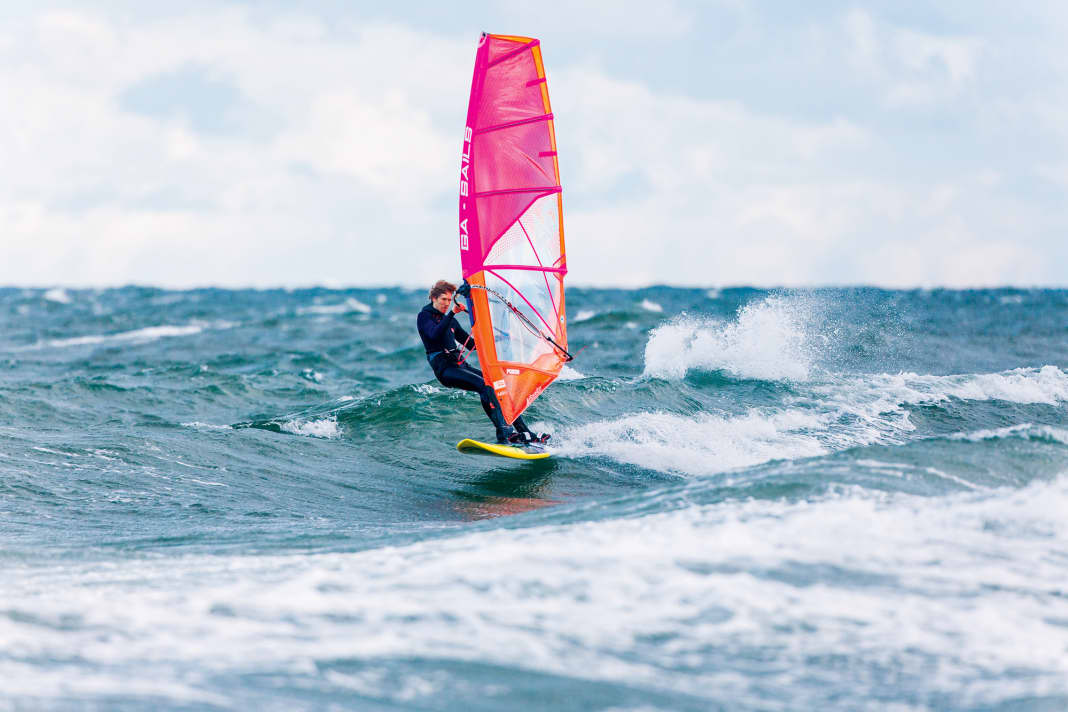





In (diagonal) onshore winds, the wheat is separated from the chaff when riding waves. Frontside rides then require special timing and completely different positioning on the wave than in sideshore conditions, for example.
Sideshore or even sideoffshore wave rides usually follow the following pattern:
- Positioning at the steepest part of the rising wave ("peak")
- Head downwind towards the flatter part ("wave shoulder").
Because the waves collapse more quickly in onshore winds and the approach to the cutback takes longer due to the unfavourable wind angle, more than one turn to leeward is usually not possible. You have to position yourself correctly on the wave to ensure that at least one cutback has plenty of power!
Also interesting:
How to ride the waves in onshore conditions
So instead of waiting at the peak on the approach, you deliberately leave it downwind and continue to gain height before entering the bottom turn. A wide grip on the boom and knees pushed forward guarantee that you generate as much speed as possible in the bottom turn for the long way to the cutback. You have positioned yourself correctly in advance when the breaking wave section comes towards you.
In order not to stall the sail draft in this phase, the sail must be opened wide; sliding the back hand towards the mast helps enormously. The more directly you approach the wave, the more sail pull builds up on the back hand during the approach.
surf tip: A common problem in this phase is parking in the wave trough. In onshore conditions, it therefore helps to ride as large a wave board as possible and to rig the sail with more belly to generate more drive in the turn. If you have correctly estimated the distance to the peak in advance, you will hit the breaking part of the wave at exactly the right moment and the built-up sail draft discharges in a crashing cutback - with the right positioning, you can also make a lot out of microwaves!
